
I wrote a piece for my blog last year called “Dorkasana,” which was about caring enough about your yoga practice to do whatever you need to stay engaged with it. For me, staying engaged involves studying anatomy, but this wasn’t always the case. When I did my first yoga teacher training, the standard 3 days of anatomy was a mind-numbing blur of what seemed to me boring and unimportant information. I didn’t care about the Latin names, and I didn’t think my future teaching would hinge on knowing what muscles were where: I wanted to chant, and sweat, and get the yoga high.
And then I started teaching, and every so often someone would come up to me after class and say something like, “When I do such-and-such pose, my knee kind of hurts on the outside.” And then they would pause, and look at me expectantly. The pause was always uncomfortable, because I would hem and haw for a bit, and then unleash this gem, “Well, maybe you shouldn’t do that pose,” followed by something generically useless like, “Take care of yourself.” After a while, it really started to bother me that I couldn’t do more to serve my students and help them get out of pain. I began to turn my studies and my teaching in the direction of anatomy, therapeutic work, kinesiology and the like. As a result of this path change, I spent last weekend assisting Jill Miller teach Yoga Tune Up® Anatomy at Liberation Yoga’s Teacher Training.
On day one of the training, the trainees reminded me what it was like to be new to anatomy: they were hearing strange words and working hard to give them context, sometimes finding themselves totally confused, and occasionally discovering moments of clarity and comprehension. The difference between their training and mine was that by day three, these trainees were naming muscles, directions of movement, and bony landmarks like they’d been doing it all their lives. I credit this difference not to any lack of ability in my first anatomy teacher, but instead in the approach to the material. For a long time for me, anatomy was a concept that lived in books and diagrams, but this training was different. The Yoga Tune Up® Integrated Embodied Anatomy is exactly what it claims to be: a hands on (yourself and others) approach to the endlessly magical and mysterious world of the human body that we all get to live in. Ball rolling, Simon says games, and full embodiment of poses and movements took anatomy out of the books and into the trainees’ bodies.
With this kind of an in-the-body introductory experience, we got to see the trainees’ interest sparked as they felt the empowerment of truly owning their own anatomy. Hopefully for some, this spark will ignite a passion for a topic that will continue to hold their attention for their entire teaching careers. It might lead them to become Yoga Tune Up® teachers, or even fully-fledged Dorkasana practitioners.
Find your nearest Yoga Tune Up® Class
Learn about Yoga Tune Up® Teacher Training.
Learn about Yoga Tune Up at home.



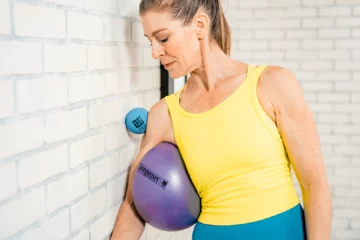

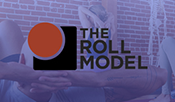
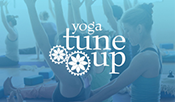


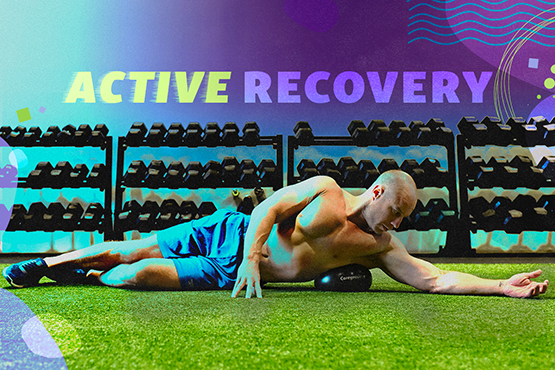
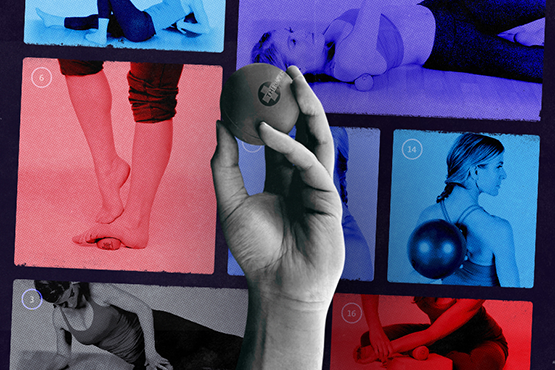
The strong anatomy background is what sets YTU apart from other trainings! I love this!
Today you drilled the fact that anatomical positions don’t change. In a world full of crazy ideas, I appreciate the fact that my head will always be superior to my throat. Unless it’s not. But then we’d have a bigger set of problems to deal with.
It is such a gift to speak anatomese! I remember a student approaching me after class expressing how much she appreciated the languaging and specific instructions. “Melt your heart” as a cue can mean different things to different people: from watching kitten videos on youtube, to flexing the shoulders while in child’s pose to broaden the upper chest.Knowledge supported by language matters!1412
Love, love, love this! I must say, this YTU Level 1 training has taken dorkasana to a whole new and kind of terrifying level for me. I’m so grateful! I am learning so much more than I expected – though from all I know about YTU, it should have been obvious that I’d learn a ton. I learn a ton from a 10 min quick fix video so OF COURSE I’m experiencing unprecedented levels of dorkasana in a full on training. I went back and read the OG “Dorkasana” on your blog too and agree wholeheartedly with that as well. I had no idea how comfortable / complacent I’d gotten in my practice or my teaching until I did this training. It’s funny – as a psychologist I’m constantly seeking out new information, making sure that I’m continuing to learn and grow, etc, and I regularly use yoga to inform my therapy practice. I think I stopped noticing that I do that so much less with yoga and this training is showing me that I need to constantly shake it up – find new orientations for the pose, like we did in class yesterday. It’s scary and humbling to realize how much more I need to learn but also completely the right thing. I never would have been on this path had I not stumbled into your Equinox class years ago. Thank you!
I just finished day 5 of the Yoga Tune Up Level 1 Teacher Training and I am still feeling completely overwhelmed; my first teacher training contained very little anatomy training and most of it is very new to me. Every day with Yoga Tune Up, I am reminded of how LITTLE I know, but every day, I learn so much more than I thought I could ever understand. I am still completely confused when it comes to naming many muscles, but I have had huge breakthroughs in learning about my own body and in managing what has been a chronic neck/shoulder condition for a few years now; I can name the main offending muscles and target them, which is invaluable all on its own. It will take some time for me to continue to break down what others seem to have a handle on, but I am confident that I willl make huge strides in the next few weeks of my own study. I have never looked at anatomy in this way before, engaged so intimately with my love for yoga, and actually learned the mechanics of the body in any lasting way. While feeling overwhelmed, I am so grateful for my experience so far!
With more and more people seeking out yoga and so many of them coming to their mats with injuries, health conditions, and limited mobility paired with a general lack of solid body awareness, I couldn’t agree more with your statement that it is our responsibility as yoga teachers to make the continued study of anatomy, kinesiology and therapeutic work a top priority. When we as teachers are enthusiastic and passionate about learning and growing while discovering the wonders of anatomy, human movement and potential for healing, our students not only benefit from what we have to share, but they are likely to be inspired to take interest and active involvement in their own personal healing and growth as well.
Classic! I felt the same about my original yoga teacher training. The anatomy only really “stuck” when it was something I could directly relate to. For example, I was having a lot of knee pain, so that particular section mattered to me, at the time. I worked with drawing up the quads and getting them firing, and learned a lot about the chains of the legs, the IT band, even the gluteals. My knees were a release point, or compensation point, for weak upper legs and glutes not doing their jobs. Then, when I first started teaching, and a student had a knee issue, I knew what to do, and I knew the right words.
Over the years, though my knees healed, it was only in my own body’s injuries and “quirks” that I found myself remembering muscle names and their corresponding idiosyncrasies.But how on earth could I teach students who had totally different issues? Totally different bodies? While time and experience was a great teacher, I couldn’t just cultivate a personal injury every time I wanted to learn something! SO impractical, not to mention foolish!
I too love YTU and am doing the teacher training myself. It’s experiential learning without injury. Take a part of the body, or a yoga pose, and dive into it, feeling it (and freeing it!) for yourself. It’s not enough to look at it in a book, no matter how well-drawn. For me, it’s not until I really can FEEL it and psychically SEE it inside my own body, that it becomes real.
I have never been more interested in anatomy as I have been since having you as my teacher: it has really awakened an intense curiosity that is only growing with every article, blog, and text I read. It kind of horrifies me that I taught for such a long time not knowing what was REALLY going on with our muscles, tendons and ligaments in various asanas. Hooray for anatomy!
After only one 3-hour session with Sara, I can tell that she is a fantastic teacher, using knowledge, practical exercises and humor to get the message across to her students. Looking forward to the next 2 sessions!
Sarah, I have become a physiological and anatomical convert since diving into the YTU pool. I even told Jill recently that YTU has completely ruined me… in a good way. I find myself being much more of a yoga snob (!), hearing crickets as I await non-YTU teachers’ explanations as to why we’re in a particular pose and what it’s doing for us. It’s refreshing to know that the workings of our inner world never stop!
I have taken anatomy before but rediscovering it in your class was refreshing and well-organized. To really know the biomechanics will undoubtedly make one a better teacher by being able to help students understand their own bodies
You described my feelings completely! Thank you for a wonderful training this weekend. The strong anatomy component is a great reminder that yoga is a healing art and that we can do a lot of good for students. I am inspired to continue my study of anatomy and perhaps complete a Yoga Tune-Up training in the near future.
Being in the fitness industry for years, it seemed the importance of anatomy and educating our clients with their own anatomy became a grueling task. Memorizing muscles other than the majory muscle groups, was quite an undertaking. My own story was very similar to Sarah’s – at the end of class not long ago, a women mentioned that every time she did a certain movement she experienced pain in an unrelated area. She wanted to know if there was a muscle there and what it was !! Ahhh!! I managed to wiggle my way out of that one … but the time was now to learn some real anatomy and hopefully have it sink in. Day 1 of training (today) was fabulous , mind boggling but fabulous. YTU is just what I’ve been looking for. Knowledge is projected to clients – and they will notice and appreciate it. Thanks for bringing this program to Ontario Canada!!
I am totally buying in to “Dorkasana”. The wealth of knowledge about anatomy and movement of the human body is expansive and completely fascinating. A lifetime of learning to be sure. I agree completely with Dagmar. The amount of information at the YTU training has been epic but so smartly presented that I know, at some point, it will all get retained. And then more workshops for reinforcement!
Dagmar I’m so glad to hear that YTU is helping make it all make sense!
This is such a great entry and firstly I am going to use it Sarah as a way to promote your training in Ireland.
YTU approach makes so much senses-it is truly challening to just remember strange names of muscles and bones in a very distant language to all of us,which is Latin,without ever trying to use it and truly inconporate them into our practice.Since studying the recommended books by Jill Miller and watching here DVD’S over and over again I became so much more kinestetically fluent and I am truly able to help so many more of my students just by understanding the basics of the anatomy.
This was a good follow up for me after attending Sarah’s class. I, too, was completely clueless about anatomy (and anything else “scientific”), but am finding myself more and more interested, compelled, even. Knowing you can more or less start from scratch is encouraging.
So glad it is natural to feel throroughly overwhelmed yet extremely interested & excited by anatomy after the 3 day YTU module. Difficulty in learning the material (latin, strange, numerous new words & concepts) only encourages me to keep at it!
I totally practice dorkasana. I recently realized that I am the Hermione Granger of my massage therapy class. I involuntarily yell out the answers I know, get annoyed when other people aren’t loving it as much as I am. I think having gone through a 200 hour teacher training really helped me get into my massage school anatomy because I do have a way a finding it on and in my own body. This means that the subject can never be dry because really, its all about me!
I will gush here because I share a similar experience. I went into my 200hr teacher training already having a background in massage therapy and was a self proclaimed A&P/Kinesiology junkie. I couldn’t get enough – like Jill and chocolate! I was so disheartened to see the majority of my other trainees had no interest in learning anatomy. An example of that is when we were all supposed to go to the bodies exhibit in the city. I drove in myself and the only two other trainees – and discovered upon parking that it was just going to be the three of us – out of 17 students!!!! They all changed their mind last minute on the train – and my teacher didn’t stop them. The bonus is I got to play teacher for a couple hours and I had 2 wonderfully engaged students as we walked around the exhibit. Now the gushing – I feel incredibly honored that Jill has created YTU and that I get to learn from her. YTU is everything I ever wanted in a training and for what I want my standard of teaching to be. We are all truly blessed that she shares her gift with us!
I really learned a lot from you this weekend during our anatomy training. The way you presented the information and made everything come alive as we palpated, touched and discovered our own bodies and those of our fellow students was extremely helpful. I certainly can’t remember everything, but I have a good foundation on which I can build. Thank you.
I love this article. I just finished my 3 days of anatomy in yoga teacher training, and it is amazing how much information we just learned. I already feel like a better yoga teacher knowing my landmarks, muscles, and directions of movement. What a great weekend- I’m definitely on my way to becoming a dorkasana practitioner.
Just finished 3 days of anatomy training with Maura. The Yoga Tune Up approach made a dry subject like anatomy fun and interesting. I look forward to use information like DOM or location and structures (anterior/posterior/superior/inferior etc.) in my own practice and teaching.
Its good to know that anatomy was a blur to you in the beginning as it is to us now! While we still have a LOT to learn, I’m looking forward to incorporating anatomy in my own yoga practice, and eventually in teaching others.
Day two of Yoga Tune Up TT finally put the anatomy portion into context for me while trying to identify all the bony landmarks on a fellow Trainee during a particular pose. I had never heard of the ASIS before but knowing the anatomical terms helped me to finally understand what my teacher means when saying “lift your hip points up” during class.
I love this approach too! Getting hands-on with the balls makes all the difference.
Enjoying your teacher training class.